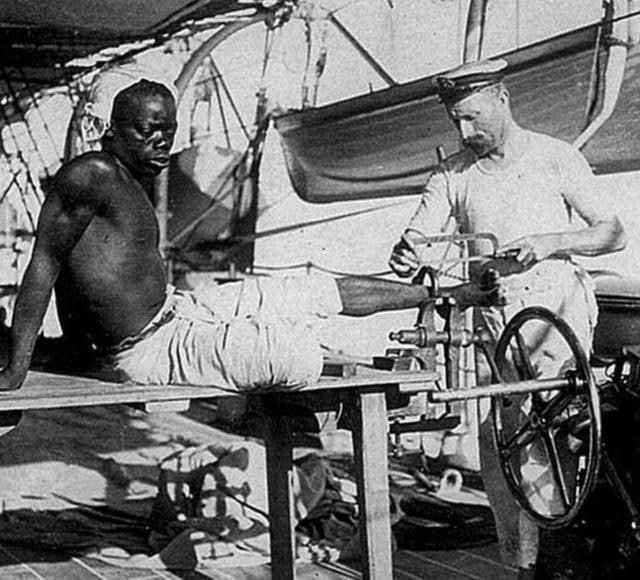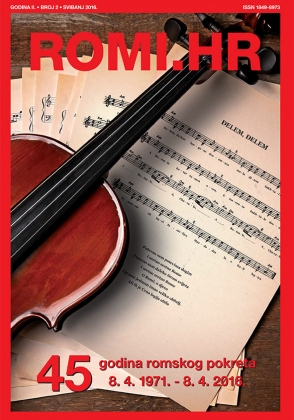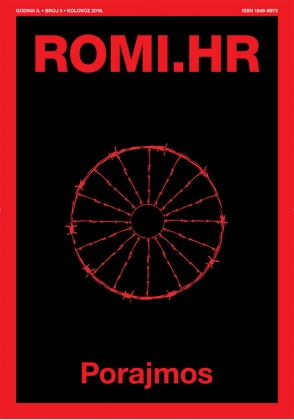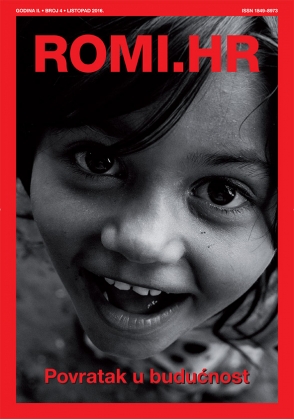Fokus ROMI.HR
/Prijevod: Antonia Mudrovčić
Ropstvo je pojava u kojoj su nečija duša i tijelo vlasništvo drugoga. Vlasnik osobi može nauditi samo zato što mu je dosadno. Osim što će prodati djecu koju si rodila, prodat će i tebe ako krene loše. Nemaš ništa, od tebe se traži da nosiš kostrijet i moraš ići u krevet gladan. Ako zagrizete još koji zalogaj, ako vlasnik ne odobrava vaš ton glasa jer nešto kažete ili ako ga slučajno pogledate u oči, možete biti kažnjeni smrću. Nemate pravnu ni institucionalnu zaštitu. Ako pobjegnete, vlasnik ima zakonsko ovlaštenje da vas uhiti.
Bogatstvo stvoreno transatlantskom trgovinom robljem uglavnom su prisvojila zapadnoeuropska kolonijalna carstva. Robovi su transportirani iz svojih domovina u Africi u kolonijalne gradove Amerike i Kariba. Većina tih ljudi vjerojatno je prebačena koristeći neke stvarno jezive metode. U Santo Domingu, koji se danas nalazi i na Haitiju i u Dominikanskoj Republici, izbila je pobuna u noći s 22. na 23. kolovoza 1791. godine. Sličan ustanak u drugoj francuskoj koloniji poslužio je kao inspiracija za ustanak na Haitiju. To je također bio značajan faktor u okončanju atlantske trgovine robljem.
Obljetnica pobune na Haitiju 1791. obilježava se 23. kolovoza, na Međunarodni dan sjećanja na trgovinu robljem i njezino ukidanje. Odaje se počast 15 milijuna muškaraca, žena i djece koji su umrli u transatlantskoj trgovini robljem i svim drugim robovima. Rezolucija UN-a kojom je ovaj dan službeno proglašen poziva na poučavanje budućih generacija o "uzrocima, učincima i lekcijama transatlantske trgovine robljem" te rasizmu i netrpeljivosti.
Islam se nije u potpunosti riješio ropstva, koje je postojalo stotinama godina, ali su pravila koja je donio dala ropstvu drugačije značenje. Iako je sugerirano da se robovi oslobode, kršćani, Židovi i muslimani koji su rođeni slobodni ne mogu se tretirati kao robovi. Ljudi iz zemlje koja je bila mačem osvojena i zatočena tijekom rata bili bi jedini koji bi se smatrali robovima ili zarobljenicima.
Osmansko Carstvo, kao i druge muslimanske države, slijedilo je temeljna pravila islama kada je u pitanju ropstvo, ali nije oklijevalo pronaći praktična rješenja za neke probleme. Tijekom osvajanja, ljudi koji su zarobljeni u ratovima i dovedeni u osmanske gradove zamijenjeni su robovima koje su trgovci robljem dobili otmicom ili kupnjom. Krimski su kanovi svake godine darivali sultane. Među tim darovima bile su mlade djevojke i mladići koje su odveli iz Rusije, Poljske i Kavkaza i doveli u palaču.
Robovi i konkubine različitih etničkih pripadnosti s Kavkaza, Sudana i Abesinije dovođeni su na tržišta robljem u različitim dijelovima carstva. Nakon tržnice robljem u Istanbulu, roblje se prodavalo u Džedi, Meki, Medini, Basri, Tripoliju, Bosni i Izmiru. Oni koji su bili privlačniji među zarobljencima od ostalih, nisu prodani na dražbi. Umjesto toga, pokazivani su važnim kupcima u posebnim prostorijama.
U arapskim državama u regiji uz zaljev, milijuni migranata prisiljeni su na rad u teškim uvjetima za malu ili nikakvu plaću. To je oblik modernog ropstva. Na primjer, sustav "kafala", koji se još uvijek koristi u mnogim zemljama u tom području, omogućuje poslodavcima zapošljavanje nekvalificiranih radnika iz zemalja poput Afrike i Južne Azije. U zamjenu se odriču svojih putovnica i mogućnosti da napuste zemlju ili promijene posao bez dopuštenja svojih poslodavaca.
No činjenica da je to područje imalo koristi od prisilnog rada nije ništa novo. Sve do 1970-ih, tradicionalno ropstvo, u kojem su ljudi odvođeni iz svojih domova i prodavani kao robovi, još uvijek je bilo legalno u mnogim dijelovima Zaljevske regije. Arapske zemlje poput Katara počinju nešto poduzimati u vezi s modernim ropstvom. S druge strane, nasljeđe ropstva u arapskim zemljama još uvijek se uglavnom ignorira i o tome se ne govori.
Ropstvo u tradicionalnom smislu završilo je prije otprilike 100 godina. Ovo je sramota za čovječanstvo koje postoji tisućama godina. Moderna vrsta ropstva još uvijek postoji u arapskim zemljama i nitko ne bi trebao biti prisiljen raditi u teškim uvjetima, a da ne može promijeniti posao ili dati otkaz. Nadamo se da će, kao što je okončano tradicionalno ropstvo, završiti i "moderno" ropstvo i da će ljudi u bilo kojoj zemlji imati slobodu izbora kada je u pitanju njihovo zanimanje.
The wealth generated by the transatlantic slave trade was mostly appropriated by Western European colonial empires. Slaves were transported from their homelands in Africa to the colonial towns of the Americas and the Caribbean. The majority of these people were probably transferred using some really gruesome methods. A revolt broke out in Santo Domingo, which is today in both Haiti and the Dominican Republic, on the night of August 22-23, 1791. A similar uprising in another French colony served as an inspiration for the uprising in Haiti. It was also a significant factor in ending the Atlantic slave trade.
The anniversary of Haiti's 1791 revolt is observed on August 23, the International Day for the Remembrance of the Slave Trade. This day honours the 15 million men, women, and children who died in the transatlantic slave trade and all other slaves. The UN resolution that made this day official called for teaching future generations about the "causes, impacts, and lessons of the transatlantic slave trade" and racism and bigotry.
The Ottoman Empire, like other Muslim states, followed the basic rules of Islam when it came to slavery, but it didn't hesitate to find practical solutions to some problems. During the conquests, the people who were taken as prisoners during the wars and brought to Ottoman cities were replaced by slaves and concubines that the slave traders got by kidnapping or buying. Every year, the Crimean khans gave gifts to the sultans. Among these gifts were young girls and boys whom they had taken from Russia, Poland, and the Caucasus and brought to the palace.
But the fact that the area has benefited from forced labour is not something new. As late as the 1970s, traditional slavery, in which people were taken from their homes and sold as slaves far away, was still legal in many parts of the Gulf region. Modern slavery is something that some Arab countries, like Qatar, are slowly starting to do something about. On the other hand, the legacy of slavery in Arabic countries is still mostly ignored, and people don't talk about it.
Throughout the course of several centuries, numerous people from Africa were taken as slaves by Muslim Arabs and shipped via the Sahara desert and the Indian Ocean to the Middle East and other regions. Main routes of slavery trade were through Sahara Desert to North Africa and by the sea to Indian Ocean and to Middle East and other regions. Africans have been sold as slaves since ancient times. In the seventh century, when Islam was getting stronger in North Africa, it became popular. This was seven hundred years before Europeans went to Africa and a thousand years before West Africans were sold to America.
Back then, Arab Muslims in North and East Africa sold Africans they had captured to the Middle East and other areas. There, they worked in the fields, as teachers, or as harem guards. For those who were harem guards it was common for male slaves to be castrated. Also, because of the reason Islamic law, on the other hand, said that Muslims, including African Muslims, could not be made slaves. If a slave converted into Islam, this was not a reason to liberate the slave.
In East Africa, the slave trade really took off in the 1600s. Every year, more and more traders from Oman moved to Zanzibar. Because there was a lot of trade on the Swahili coast, the island became even more important in international trade, including the slave trade. This is how East Africa's biggest slave market got started. Estimates, some of which are very different from one another, are the only way to know how many Africans were sold from East to North Africa. A big reason for this is that many of the slaves died. Researchers have found that about three out of every four slaves died before they could be sold at the market. People died because they were hungry, sick, or tired from long trips.
Slavery is the phenomenon in which one's soul and body are owned by another. Just because the owner is bored, he might come and harm you or wake you up in the middle of the night to whip you. In addition to selling the children you gave birth to, he will also sell you if things go wrong. You have nothing, you are required to wear burlap, and you must go to bed hungry. If you take an additional bite, if the owner disapproves of your tone of voice because you say something, or if you accidentally look into the owner's eyes, you may be punished with death. You have no legal or institutional protection. Alternatively, if you flee, the owner has the legal authority to apprehend you. When you are a slave, you can be used for your masters sexual pleasure, you cannot have a family, your child can be sold to some other master. When you are a slave, you are an object with no rights. Slave trade was a big disgrace on humanity and we should never forget those who suffered.
 Povratak na Fokus
Povratak na Fokus













